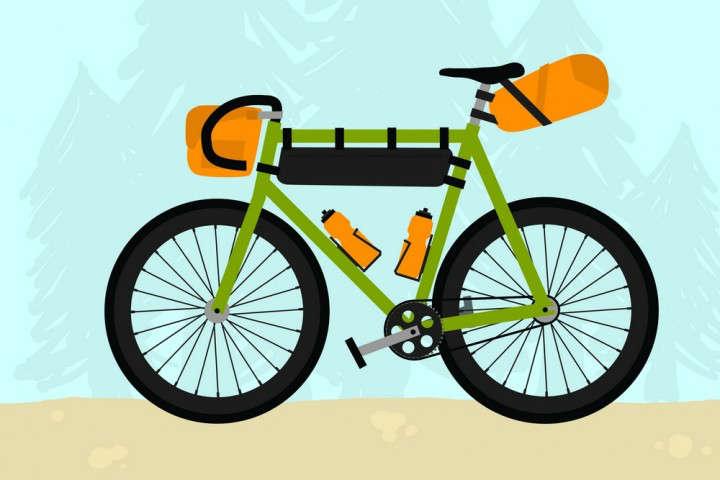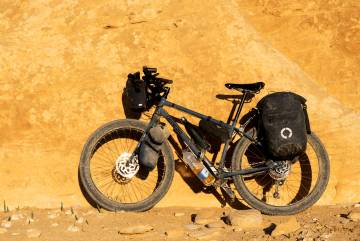Travelling in bikepacking mode: what is it and what is it used for?
Bikepacking equipment: what you need
- Handlebar bag: realized to be applied to proper fastenings placed on the bike between handlebar and brakes, this bag is, together with the saddlebag, part of the classic bikepacking equipment. Ideal to contain lightweight objects like a sleeping bag, spare t-shirt, waterproof pants or cagoule, the handlebar bag shouldn’t be overloaded, doesn’t need front luggage racks and can have a maximum capacity of about 20 litres.
- Saddle bag: it is an essential part of the equipment for a bikepacking trip. By means of proper straps and buckles, it is possible to fasten the bag, that can reach a capacity of 14 litres, to the saddle of any bike. In the buckles of the saddlebag, you can also transport sandals or a windproof jacket.
- Frame bag: since every bike has different geometries and frames, this type of bag should be tailored. You can decide to occupy the whole space available so giving up your water bottle, or to occupy just a part of the frame... anyway, before buying make sure it is compatible with your bike. This bag is suitable for transporting heavier objects like food or the repair kit and the various tools necessary for your trip.

Travelling in bikepacking mode

How much does it cost to travel in bikepacking mode?
Log in with ( Sign Up ? )
or post as a guest
Be the first to comment.

Vero
ITA - Correva l'anno 1983 quando ha sorriso per la prima volta alla luce del sole estivo. Da sempre col pallino per l'avventura, ha avuto la fortuna di girare l'Europa e l'Italia con i genitori e poi, per la maturità, si è regalata un viaggio in 2 cavalli da Milano verso la Russia. Al momento giusto ha mollato il lavoro senza alcun rimpianto per volare in Nuova Zelanda dove ha viaggiato per cinque mesi in solitaria. Nel 2007 ha provato per la prima volta l'esperienza di un viaggio in bici e, da quel momento, non ne ha potuto più fare a meno... così, dopo alcune brevi esperienze in Europa, nel 2010 è partita con Leo per un lungo viaggio in bicicletta nel Sud Est asiatico, la prima vera grande avventura insieme! All'Asia sono seguite le Ande, il Marocco, il Sudafrica-Lesotho e #noplansjourney. Se non è in viaggio, vive sul lago d'Iseo! Carpediem e buone pedalate!
EN - It was 1983 when he smiled for the first time in the summer sunlight. Always with a passion for adventure, she had the good fortune to travel around Europe and Italy with her parents and then, for maturity, she took a trip in 2 horses from Milan to Russia. At the right moment he quit his job with no regrets to fly to New Zealand where he traveled for five months alone. In 2007 she tried the experience of a bike trip for the first time and, from that moment on, she couldn't do without it ... so, after some short experiences in Europe, in 2010 she left with Leo for a long cycling trip in South East Asia, the first real great adventure together! Asia was followed by the Andes, Morocco, South Africa-Lesotho and #noplansjourney. If he's not traveling, he lives on Lake Iseo! Carpediem and have good rides!
















